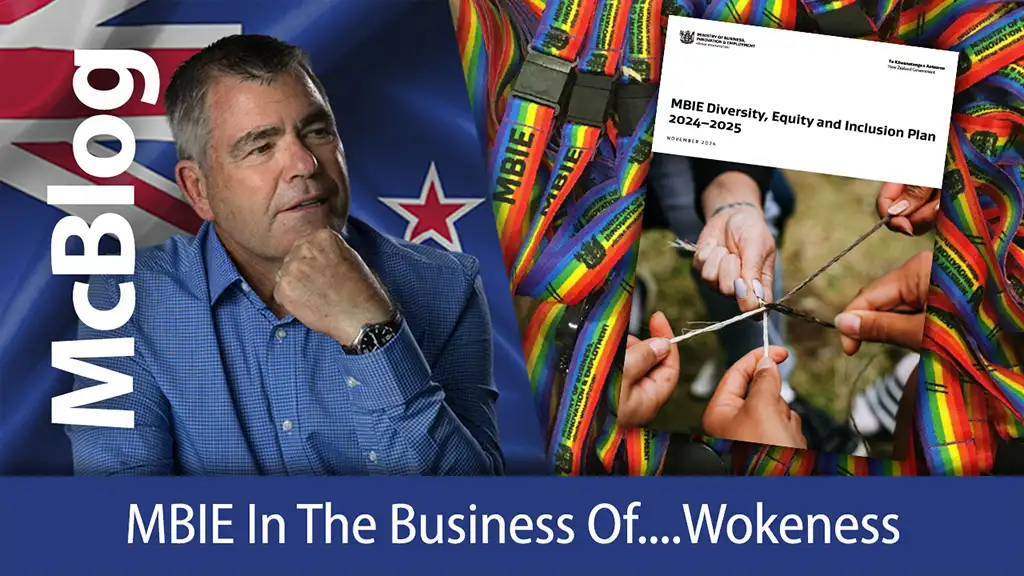Census forms arrived to most kiwis this week. Before you fill out the form, you need to figure out your sex at birth – and then your gender. Apparently… they’re totally different. The census is an exercise in radical gender ideology by Stats NZ.
Statistics are very important. They tell us the true nature of the issues we’re wanting to tackle or deal with as a society. But statistics can be distorted and the agenda behind getting those statistics can also be distorted. My census form arrived yesterday. Distortion 101. Before you fill out the form, you need to figure out your sex at birth and then your gender. Apparently they’re totally different.
Before I touch on the Census which has probably just arrived at your place, two earlier incidences which should raise a red flag.
Statistics NZ who you would think would get their statistics as accurate as possible with bias or judgement put out a media release just over 12 months ago about the LGBT population. This is what it said
One in 20 adults identify as LGBT
OK – but then it says
4.2%.
Now for those of you who are mathematicians, and with my limited statistical knowledge, 4.2% is strictly speaking 1 in 23.8 which, if you rounded it to the nearest whole number, would be 1 in 24. But Stats NZ conveniently rounded it down to 1 in 20 – which kind of sounds better, doesn’t it. And the media of course jumped on that particular statistic – 1 in 20 – even though they were also repeating the 4.2%, and they didn’t ask any questions
I went back to Stats NZ and said look it says 4.2 percent – you’ve said 1 in 20. Isn’t it more accurate for you to say 1 in 23.8 or 1 in 24 to be more accurate? Their response was “When presenting data our standard approach is to round to a multiple ie 1 in ….) that is easily understandable to the general public.”
I don’t know about you but one in 24 sounds pretty easily understandable. Maybe under their policy you should go to 1 and 25 just to be clearer, but to round down to 1 in 20 suggests that – well, you can probably figure out what they are suggesting – that it’s more prevalent than it actually is. And that suits the narrative.
And please define LGBT. Isn’t it now LGBTQQIP2SAA+++. Terminology matters eh.
But then earlier this week, Stats NZ said that the number of teenage women in New Zealand giving birth has more than halved over the last decade. Great. Less teen mums. Less abortions also.
It’s also superb to see that they identify that only “women” give birth. So that’s progress!
But then they make this interpretation –
“The decreasing number of teenage births coincides with improved education and access to contraception,”
So all we need is more sex education – and more condoms. It’s working – here’s the proof. Let’s have more.
Slight problem. That’s not what the research shows.
In the Youth2000 survey series where they’ve surveyed around 8,000 secondary school students in 2001, 2007, 2012, and most recently, 2019.
In summary, Youth19 sexual health data shows that:
• Sexual activity among youth has significantly reduced between 2001 and 2019
• Condom use has not improved significantly among students in 18 years; a smaller proportion of sexually active students always used condoms in 2019 (41%) compared to 2001 (49%)
• Contraception use has not improved for sexually active students; compared to 2001, 2007 and 2012, sexually active students in 2019 are less likely to always use contraception.
Whoops – so that statement “The decreasing number of teenage births coincides with improved education and access to contraception,” isn’t backed by the evidence.
Once again, Stats NZ is moving out of the mathematical & statistical analysis into culture messaging.
Other commentators think there is a retreat from teenage sex for cultural reasons: the ‘consent’ issue (which is a good thing to be focused on); confusion over sexual identity; and eyes on screens leading to living virtually and less physical time and contact with others. Education and contraception may be just a small part of that.
It seems to me that Stats NZ are pushing their own narrative – rather than simply presenting the hard data.
And now to my final example – and it arrived at my house just this week.
The Census.
As soon as you start filling in the Census, the ideology immediately kicks in. Here’s your opening questions
Q1 Confirm it’s you
Q2 confirm where you were born
Q3 … question 3! What’s your gender identity.
Gender refers to a person’s social and personal identity as male, female, or another gender (or genders) that may be non-binary. A person’s sex at birth may differ.
The answer options are “Male Female Another gender”
And then q4 – What was your sex at birth?
And unbelievably, there’s only 2 options! Male Female. How binary.
There’s then more questions – and we get to…
Which of the following best describes how you think of yourself?
heterosexual / straight, gay or lesbian, bisexual, another identity, (isn’t that sexuality) and prefer not to say
But why don’t they list them all? I mean, why don’t we list the 112 genders and over 200 sexualities?
This Census is ideologically flawed!
By the way, the gender and sex questions – you only have to answer one of them. Which of course is actually biologically the truth. Ironic isn’t it. So my hint for you today is – the gender identity one doesn’t have to be answered.
The concerning aspect is that Stats NZ has been captured by gender identity politics – but they’re going to realise just how difficult and confusing and subjective the issue is. Statistics should deal as much as possible in actual measurable definable realities – not subjective standards with no measurement.
And remember, this Census I could be male. Next census I could be female. The following year I might be both. Or neither. The following Census I’m unsure (not surprisingly!)
Stats NZ actually admit that might be the case in their guidelines, saying “People may identify with more than one gender identity.”
Statistics NZ will never make these groups happy. Even gender identity activists are complaining and saying it’s problematic. Stats NZ also states that this is a standard and not mandatory for people to use – so how is it going to be applied?
Stats NZ need to stick to statistics and leave the social engineering and wokeness and cultural narratives to others. Statistics should be independent, factual, non-bias and accurate because when they’re not – when they’re misrepresented – then it destroys your credibility.
When it’s coming from government data, I think we should all be concerned.



